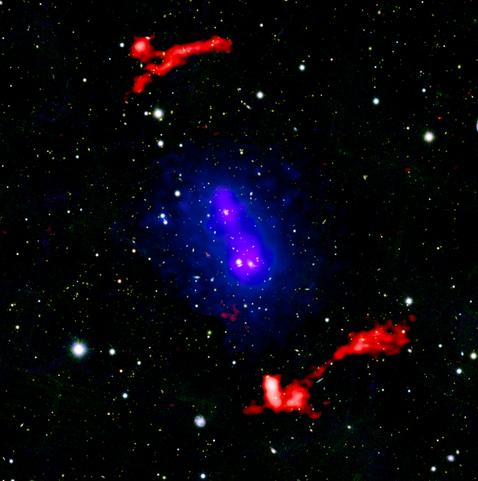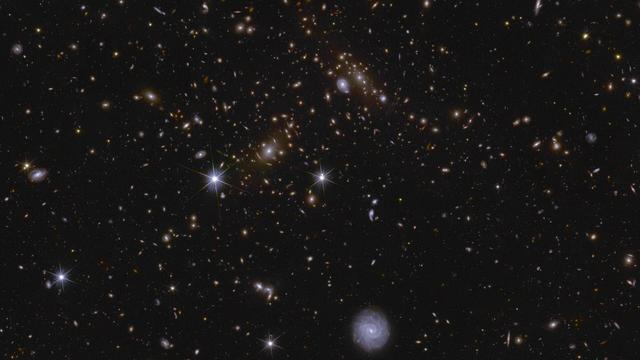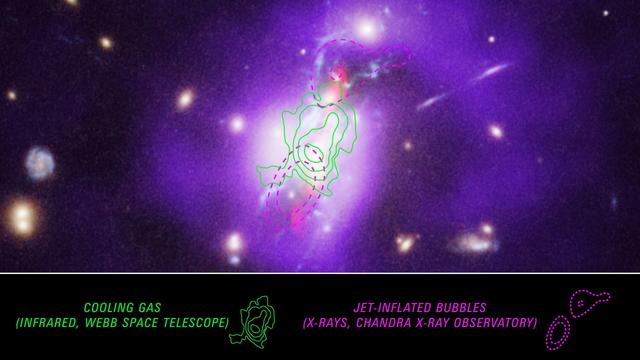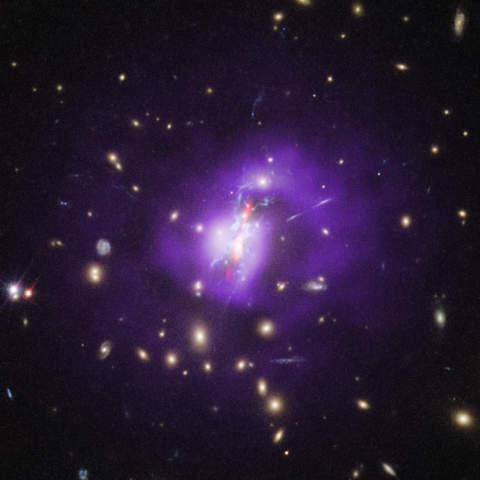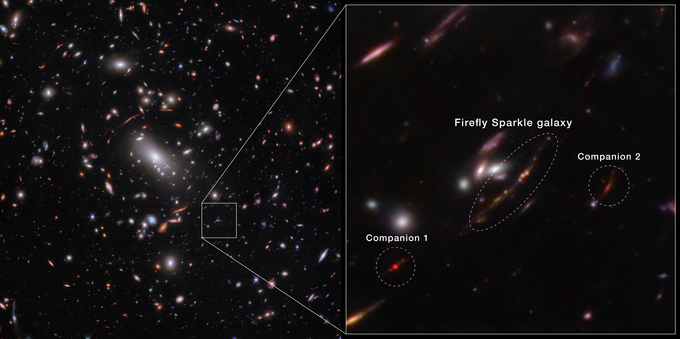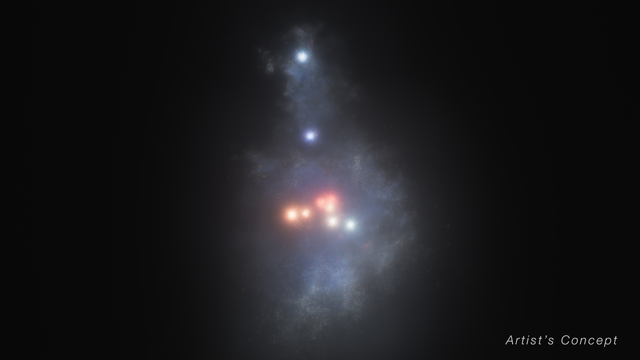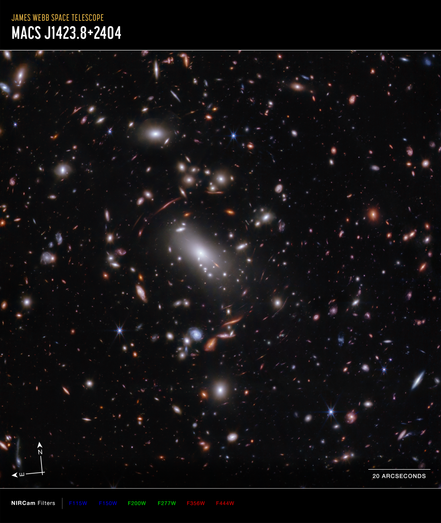Location of Euclid Deep Fields on Gaia and Planck sky map ✨🛰️
#Astronomy #Darkmatter #Galaxies #Galaxies,distant #Galaxy #Galaxyclusters #Gravity #Nebula
⏩ 7 new pictures from ESA https://commons.wikimedia.org/wiki/Special:ListFiles?limit=12&user=OptimusPrimeBot&ilshowall=1&offset=20250320064204
Galaxy clusters are the largest structures in the universe. Protoclusters like SPT2349-56 offer a unique window into this process, allowing astronomers to observe galaxies as they come together in a dense environment.
By comparing ALMA's high-resolution configuration observations with lower-resolution data from ALMA's Compact Array (ACA), and APEX, the team found a significant amount of molecular gas "invisible" in the higher-resolution ALMA images. The ACA detected 75% more CO than the sum of individual sources detected in higher-resolution ALMA data.
This missing gas isn't just a few faint, undetected galaxies. Instead, it appears to be a diffuse reservoir of gas spread throughout the protocluster.
This hidden gas reservoir could be the key to understanding the intense star formation activity observed in SPT2349-56. The presence of so much extra gas extends the star formation fuel, meaning the overall depletion timescale will exceed 400 million years.
SPT2349-56 is an extreme system, producing stars 10.000 times faster than our Milky Way, and these observations have pushed scientists' understanding of galaxy formation and evolution. No simulation or galaxy formation model had previously predicted this overdensity of gas. These findings also suggest that high-resolution ALMA observations, while excellent for studying individual galaxies, may miss a significant gas component in these early clusters. The missing gas may reside in the circum-galactic medium (CGM) or the pre-heated proto-intracluster medium (proto-ICM).
More information at https://www.almaobservatory.org/en/press-releases/alma-founds-hidden-cosmic-fuel/
#ALMA #AtacamaLargeMillimeterSubmillimeterArray #GalaxyClusters #StarFormation
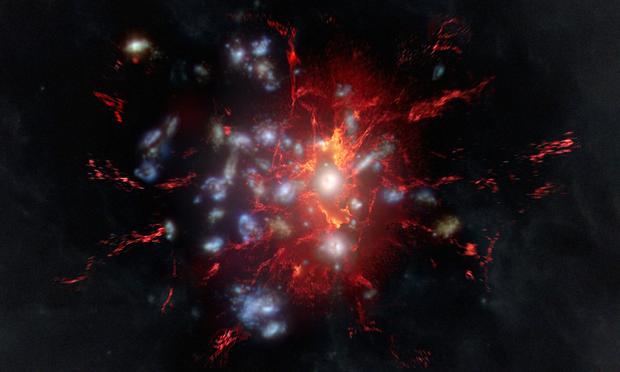
ALMA Found Hidden Cosmic Fuel | ALMA Observatory
An unexpected discovery made by a scientific team using data from the Atacama Large Millimeter/submillimeter Array (ALMA) and the Atacama Path Finder Experiment (APEX) reveals diffuse molecular gas in distant galaxy protocluster, extending star formation timeline to 400 million years. The surprisingly large reservoir of molecular gas is located approximately 12 billion light-years away in...
I had the pleasure to be interviewed by Alexandre Morales for France Culture, to talk about the discovery of Quipu, one of the largest known structure of the Universe. It will air tomorrow morning at 6:52.
Here is the press release by the authors of the discovery at MPI Garching https://www.mpg.de/24197951/largest-superstructure-in-the-nearby-universe
#Quipu #QuipuSupercluster #Cosmology #Cosmography #galaxies #galaxyclusters #XrayClusters #ROSAT #CLASSIX #Astronomy #Astrophysics #Astrodon #science #STEM #news #AlexandreMorales #FranceCulture
Phoenix Cluster (Hubble, Chandra, VLA Annotated) ✨
⏩ 2 new pictures from Webb (NASA) https://commons.wikimedia.org/wiki/Special:ListFiles?limit=4&user=OptimusPrimeBot&ilshowall=1&offset=20250214100125
Illustration of the Firefly Sparkle Galaxy in the Early Universe (Artist's Concept) ✨
#Galaxies #GalaxyClusters #GravitationalLensing
⏩ 4 new pictures from Webb (NASA) https://commons.wikimedia.org/wiki/Special:ListFiles?limit=5&user=OptimusPrimeBot&ilshowall=1&offset=20241212100528
Found: First Actively Forming Galaxy as Lightweight as Young Milky Way - NASA Science
For the first time, NASA’s James Webb Space Telescope has detected and “weighed” a galaxy that not only existed around 600 million years after the big bang, but is also similar to what our Milky Way galaxy’s mass might have been at the same stage of development. Other galaxies Webb has detected at this time […]
https://cdsarc.cds.unistra.fr/viz-bin/cat/J/A+A/691/A99
#RadioSources #GalaxyClusters
